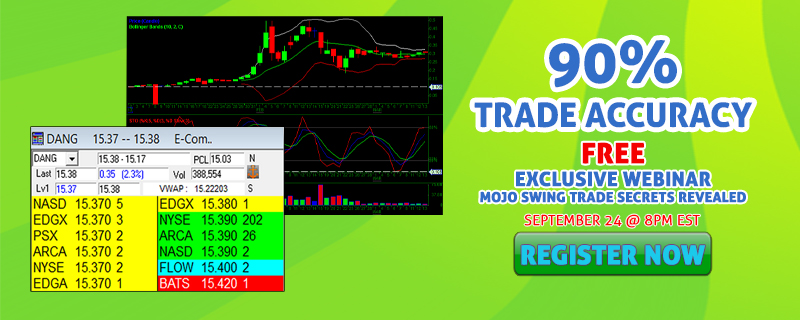
Level 2 on LIQD looks strong - that is what they call a NITBB
- Market makers also occasionally try to deceive other traders using their order sizes and timing. These types of orders are called NITBB or NITSO (No Intention to Buy Bid or No Intention to Sell Offer). When using this technique, the market participant displays a huge size greatly exceeding all others seen on Level 2. Most often it’s done in order to provoke traders to move in the opposite direction, as they are trying to undercut this big size or to get in or out “front running” this size.
Example: If some player wants to accumulate shares at $5.90 while the market is at $5.98 x 10, he can try and display a huge size at $6.02, spooking traders into selling. Meanwhile our player places a bid for small shares at $5.90 with a reserve order for the amount of shares he needs, thus absorbing the selling. When he is done buying, he cancels his sell order. Of course this technique could now be used to propel the stock up. If a quick profit was the original intention of our player, he can do just that by selling his accumulated shares at a higher price. More often, this technique is used simply to accumulate shares when building big position. Needless to say, this can be done only on thinly traded issues – an attempt to do something like this on AAPL will be doomed. This also carries a certain risk – there could be someone attracted by big size to initiate or liquidate his position, and if that happens, our player will be stuck with big position against his original intention.A trader can try and use this situation for a scalp in the opposite direction, buying when the accumulation is done and big intimidating size disappears.A variation of this technique would be to drive a stock to a certain price level by following it with a bid or an offer which stays slightly away from the inside market and chases it as a price moves. If a stock trades at $5.98 x 10 and our player wants it at, say $6.20 to start unloading his position or for whatever reason, he displays big size at $5.93 for instance, and trails it higher as a stock moves higher but stays behind the best bid all the time.In both cases such a “fake” order is usually easy to spot given two signs. Firstly, such an order most often stays slightly away from the inside market. Secondly, if some trades are executed against this order, it usually disappears immediately. - Using big order size for attraction is a directly opposite scenario. When a player has a big position to sell and he senses some buyers are looking for a size to buy, he can try and display big size in order to attract a buyer by opportunity to build his position in a single hit. This involves differentiation between this situation and the one we described earlier, when appearance of a big size will spook traders. An experienced trader working big orders usually possesses such skill (although he won’t be guarantied from mistakes of course).A trader can use this situation as an indication of some institutional interest in a stock. Considering that big institutional firms use a much longer time frame, there is no guarantee that a stock is going to move right away, but it’s worth keeping an eye on for signs of movement starting.
- There are cases when a big player interested in a stock, builds his position as a stock moves. There is already interest in a stock aside from his interest, maybe as a result of some news event. Trying to get as much shares as possible at more favorable prices, our player can apply combinations of methods described above. The player will show big sizes trying to cap the movement and provoke pullback which he will be using to accumulate more shares. The player will have to be very careful to avoid being “steamrolled’ by hot buying. As he maneuvers, his movements sometimes can be read. This is dangerous and fast game, for our player as well as for a trader that tries to utilize his moves. If he is using ECNs to mask his identity, this becomes even more of an art. Used in conjunction with chart reading, these observations can provide additional clues for timely entry and exit.





